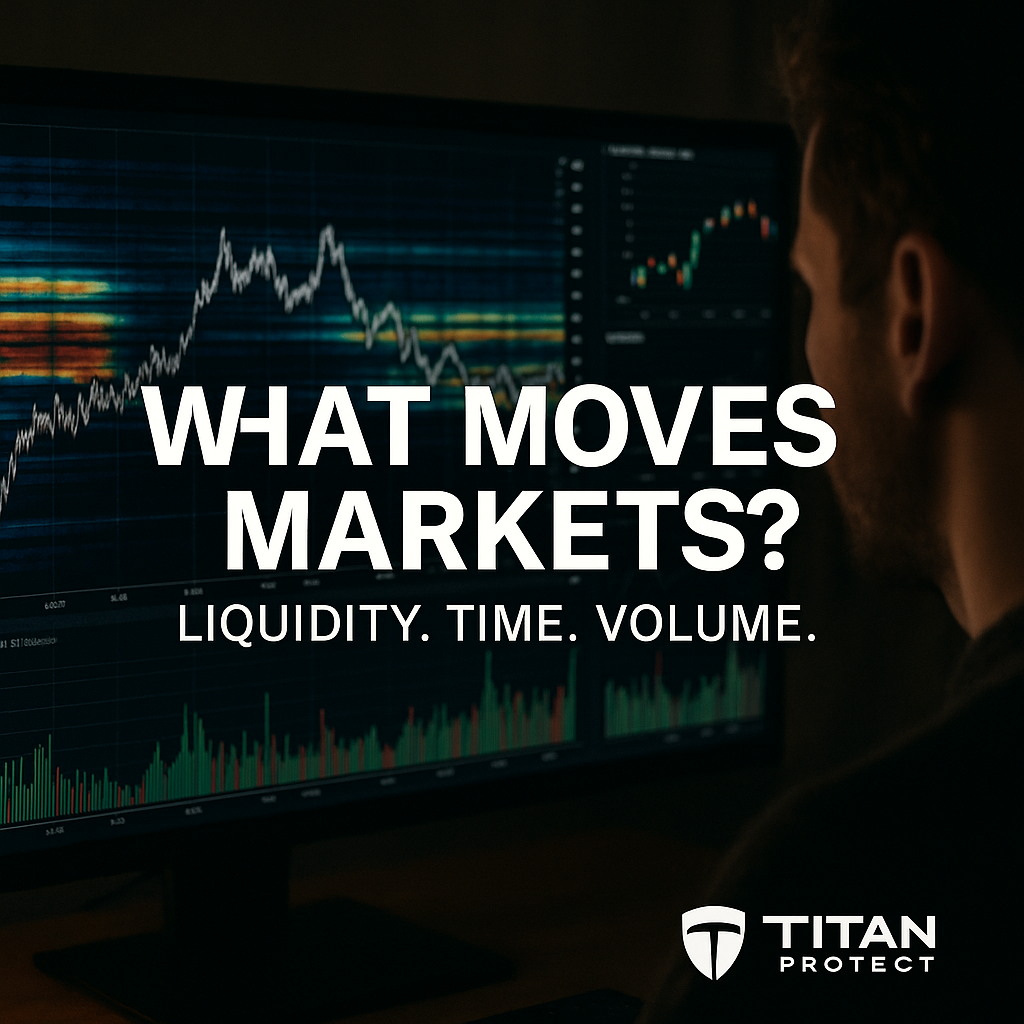Why Liquidity, Time, and Volume Must Be Read Together
Most traders begin by watching one thing: price.
But price is just the surface — the visible tip of a much deeper system.
The real fuel behind market movement is a three-part engine:
Liquidity, Time, and Volume.
On their own, each is helpful.
But together, they reveal where the real moves are likely to happen — and where false moves may trap you.
🔵 1. What Is Liquidity — and Why It’s Misunderstood
When traders hear “liquidity,” they often think:
“High volume. Easy fills. Lots of activity.”
But that’s not quite right.
True liquidity refers to:
Where limit orders (passive participants) are resting
Where stop orders (reaction points) are clustered
Where market orders will move price once they’re triggered
These zones act like magnets and fuel tanks:
Price gravitates toward high-liquidity zones (to fill large orders)
Once it gets there, it often reacts — or runs further if those orders are consumed
🔎 Titan Insight:
The Matrix Guardian shows dynamic liquidity zones using volatility-adjusted layers — helping you visualise where price is being pulled and where it may stall.
⏱️ 2. Why Time of Day Matters More Than You Think
The same trade setup behaves differently:
At the London Open vs the New York Lunch
At options expiry vs holiday drift
On a news day vs a calm session
Why? Because different market participants are active at different times.
Institutions tend to execute in bursts during key sessions.
Algos change logic based on volatility regimes.
Retail chases trends late in the day.
🔄 What to Watch:
Session opens = explosive, volatile, key direction
Midday = rangebound, choppy, low liquidity
Closes = position squaring, sharp reversals
🧠 Titan Tip:
Titan’s indicators integrate session-based logic to avoid false entries during dead zones and highlight key time-based reaction blocks.
🔊 3. Volume: The Missing Confirmation
Many traders treat volume as an afterthought.
Some don’t even look at it.
But when volume confirms a move, the probability of success dramatically increases.
Volume tells us:
If a breakout is real (or likely to fail)
If a move is exhausted (climax volume + reversal candle)
If price is being supported or manipulated
The key is not just high or low volume — but when and where it happens.
📌 A breakout on low volume near lunchtime? Likely a fakeout.
📌 A rejection candle on high volume at a liquidity zone? That’s signal, not noise.
🔍 Titan Tool Highlight:
Our Flow Intelligence engine links volume bursts with structure and time — producing confidence-adjusted scores that help you see strength in real time.
🧪 4. A Practical Example
Imagine this setup:
Price approaches a resistance zone
It breaks slightly above — during US lunch
Volume is light
It reverses hard back inside the range
To the untrained eye, that was a failed breakout.
But if you’d read the time, volume, and liquidity, you’d have seen:
⚠️ Wrong time of day
⚠️ No volume support
⚠️ Thin liquidity above the level
Titan indicators would’ve highlighted this with:
❌ Weak flow score
❌ Low confluence
✅ Liquidity reversal block warning
🧠 Why This Matters for Your Trading
When you combine Liquidity, Time and Volume, you stop reacting emotionally and start reading the market like a map.
✅ You wait for intentional moves
✅ You avoid trap setups in low-volume zones
✅ You place stops and targets based on logic, not hope


